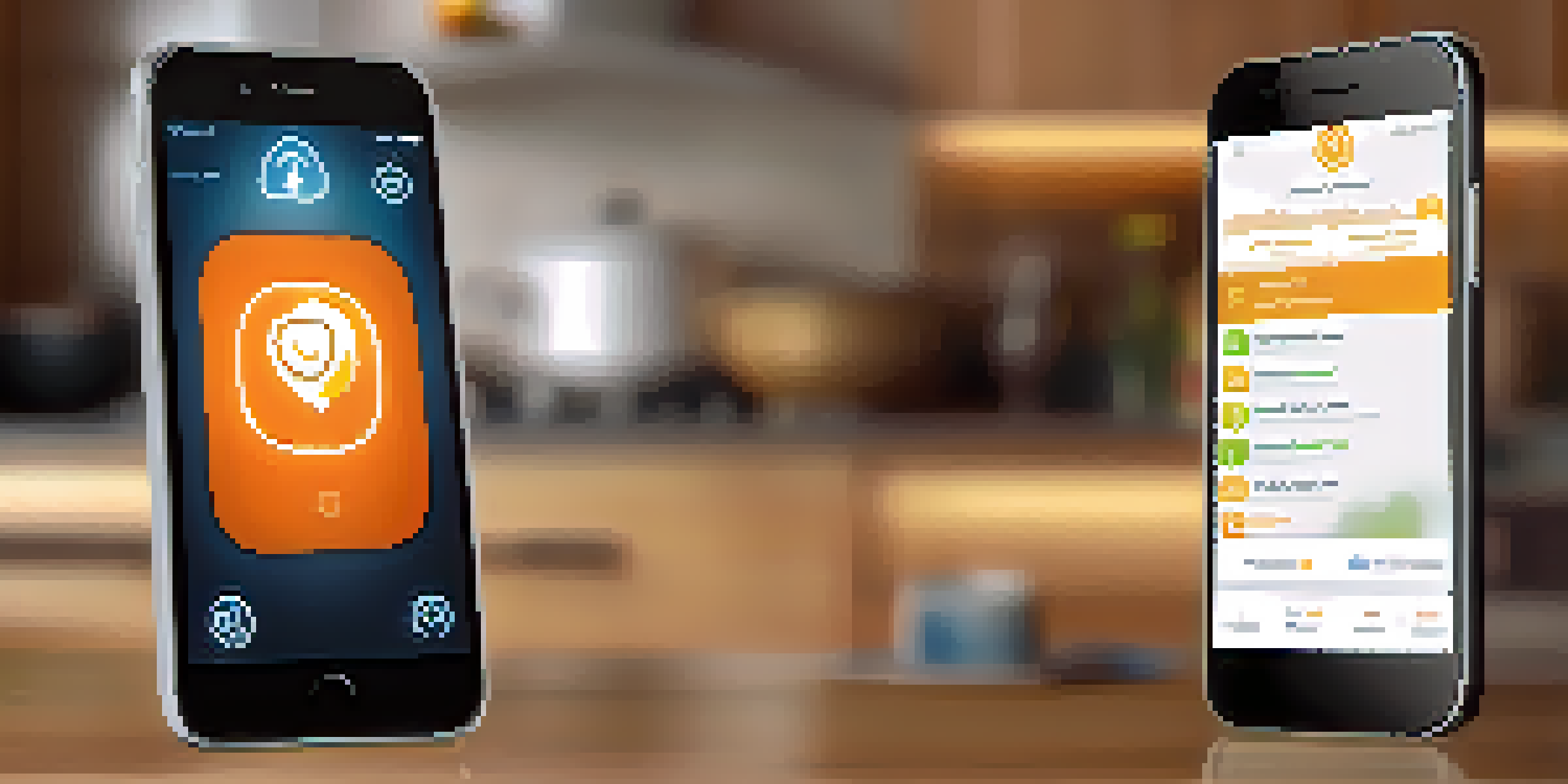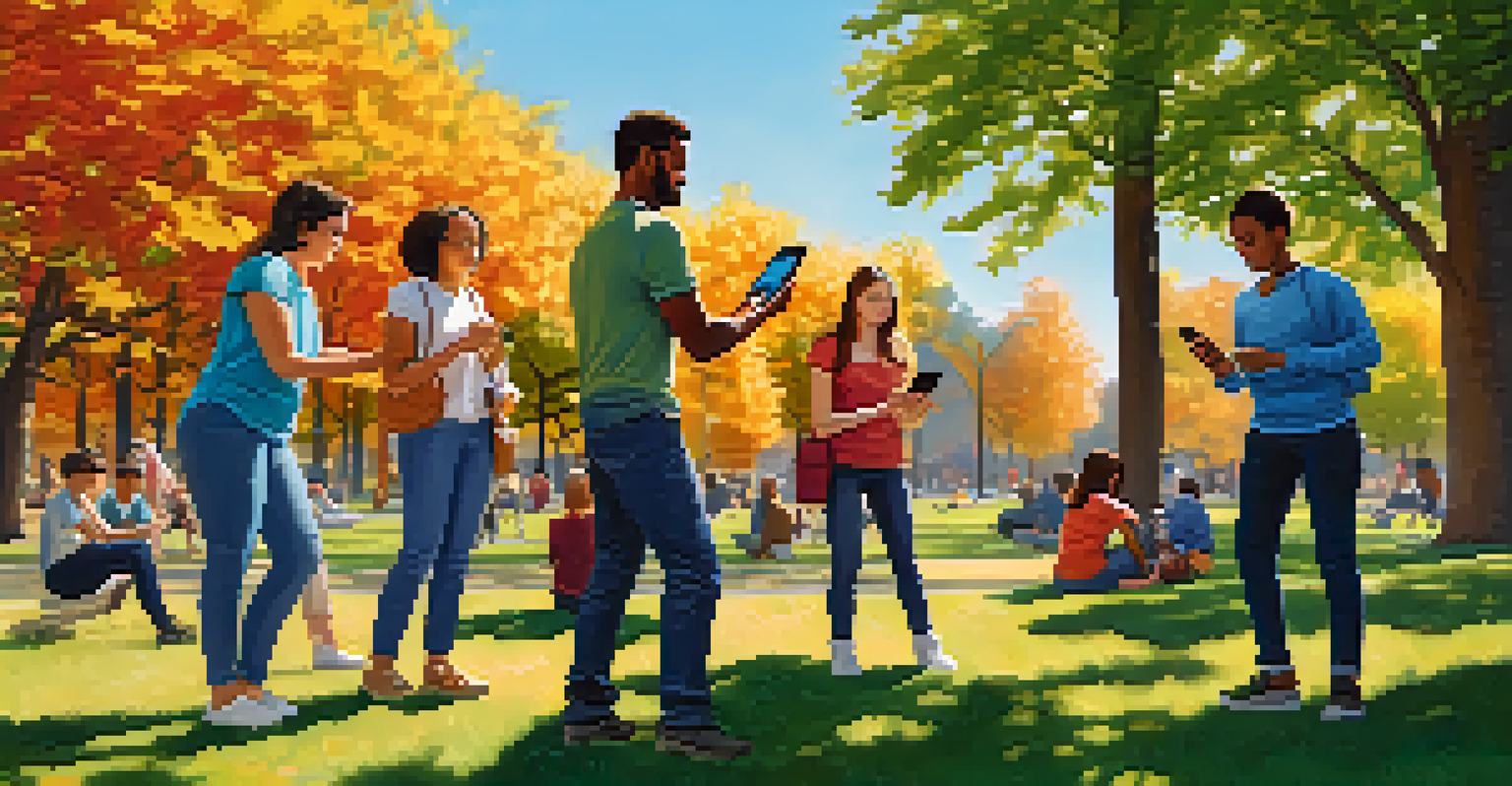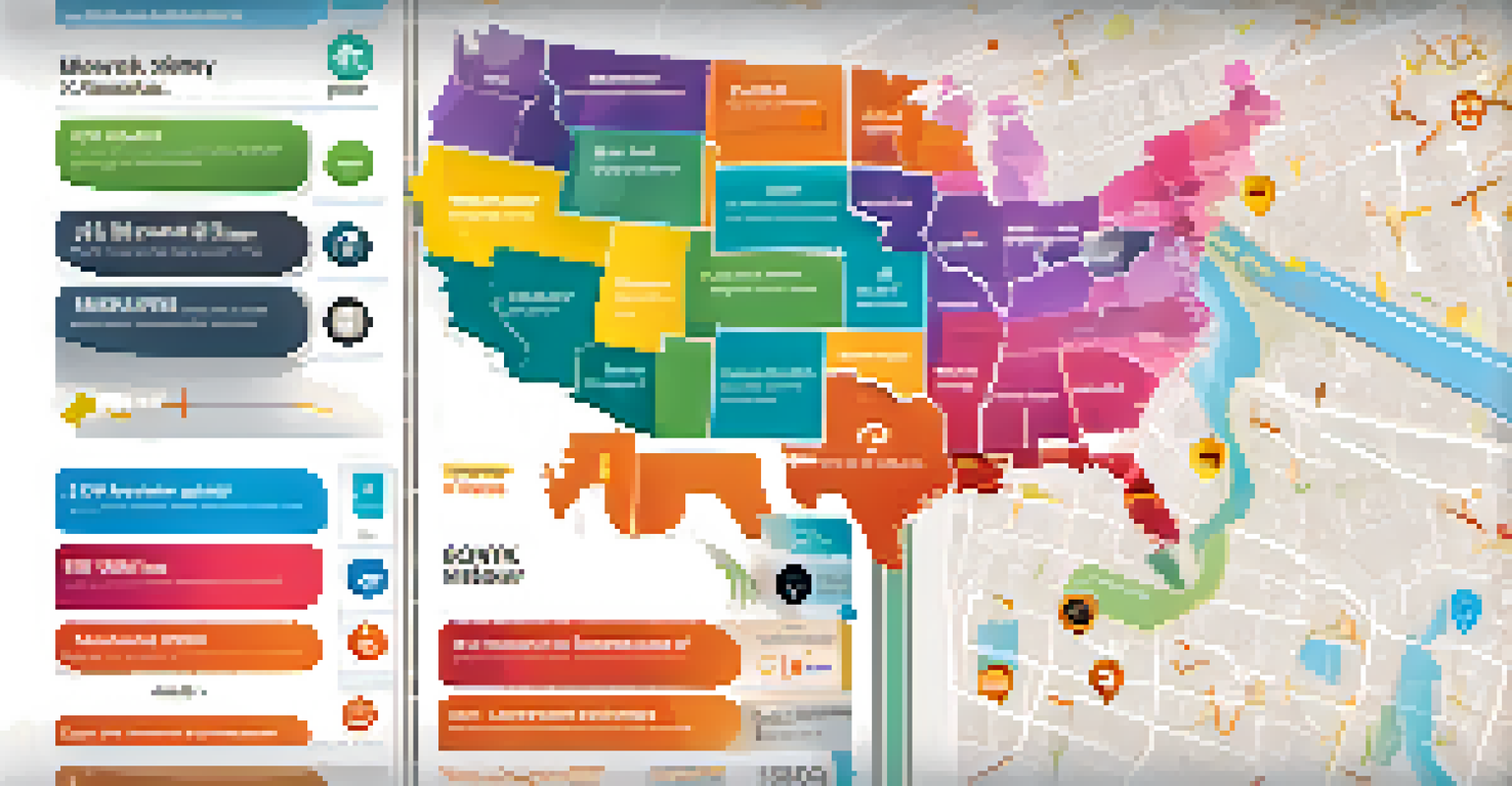How to Use Personal Safety Apps Effectively

Understanding Personal Safety Apps and Their Benefits
Personal safety apps are designed to enhance your security and provide peace of mind. They can send alerts, share your location, and connect you with emergency services at the touch of a button. By understanding their features, you can choose the right app that fits your needs.
Safety isn't expensive, it's priceless.
These apps often come with various functions, such as location tracking, emergency alerts, and even safety network features where friends and family can be notified of your situation. This connectivity can be crucial in emergencies, making it easier to get help when you need it most. Ultimately, these apps empower you to take control of your safety.
In an increasingly unpredictable world, investing time in understanding how these apps work can significantly enhance your personal security. Whether you're commuting late at night or traveling to unfamiliar places, the right safety app can be a game changer.
Choosing the Right Personal Safety App for Your Needs
With numerous personal safety apps available, selecting the best one can feel overwhelming. Start by identifying your specific needs: do you require location tracking, emergency alerts, or a feature for notifying loved ones? Knowing what you want will narrow down your options significantly.

Additionally, consider the app's user interface and ease of use. A complicated app can be counterproductive in emergencies. Look for apps that offer straightforward navigation, so you can access essential features quickly when it matters most.
Choose the Right Safety App
Identifying your specific needs and user-friendly features will help you select the best personal safety app.
User reviews and ratings can also provide insight into the effectiveness of different apps. Researching these can help you find a reliable app that others have successfully used in real situations. Remember, the best app is one that fits seamlessly into your lifestyle while providing the security you need.
Setting Up Your Personal Safety App Correctly
Once you've chosen a personal safety app, the next critical step is setting it up correctly. This often involves entering your personal information, including emergency contacts, medical details, and location settings. Ensuring this information is accurate can make a significant difference in times of crisis.
In an emergency, every second counts. Be prepared and stay connected.
Don't forget to customize the app's settings to suit your preferences. For instance, you might want to alter the frequency of location updates or how alerts are sent to your emergency contacts. Tailoring these settings can enhance your app's functionality and ensure it meets your unique safety needs.
Lastly, familiarize yourself with the app's features and functionalities. Take some time to explore it before you actually need it, so you're not fumbling around in a stressful situation. Knowing how to use the app effectively can save precious seconds during emergencies.
Regularly Updating Your Personal Safety App
Just like any other app, personal safety apps require regular updates to function optimally. These updates often include improvements to security features, bug fixes, and new functionalities. Ignoring updates may leave your app vulnerable and less effective during crucial moments.
Check for updates periodically or enable automatic updates on your device to ensure you always have the latest version. This way, you won’t miss out on any new safety features that can enhance your experience. Keeping your app up-to-date is a simple yet effective way to maintain your safety.
Set Up and Update Regularly
Correctly setting up your app and keeping it updated enhances its functionality and security.
Additionally, consider revisiting your settings after each update, as new features may change the app's functionality. Staying informed about these changes helps you adapt quickly and make the most of your personal safety app.
Sharing Your Safety App with Friends and Family
One of the standout features of many personal safety apps is the ability to share your location or alerts with friends and family. By doing so, you can create a support network that enhances your overall safety. When loved ones know where you are, they can act quickly in case of an emergency.
To share effectively, ensure that your contacts are aware of how the app works. Provide them with instructions on how to access the information you share. This proactive approach can save time and confusion should a situation arise where they need to respond.
Moreover, consider having regular conversations about safety with your friends and family. Discuss scenarios where the app could be useful, which can foster a deeper understanding and preparedness. This collaborative approach can make everyone feel more secure.
Practicing Emergency Scenarios with Your Safety App
Having a personal safety app is just the first step; knowing how to use it in an emergency is crucial. One effective way to prepare is by practicing different emergency scenarios. Role-playing can help you and your loved ones understand how to react when it counts the most.
For instance, simulate a situation where you need to send an alert or share your location quickly. This practice can help reduce anxiety and clarify any uncertainties about the app's functionalities. The more familiar you are with the app, the more confident you'll feel in a real-life situation.
Practice Emergency Scenarios
Role-playing emergency situations with your safety app builds confidence and preparedness for real-life events.
Additionally, encourage your friends and family to practice too. This creates a community of safety awareness, where everyone knows how to respond effectively. Remember, preparation is key to ensuring that your safety app serves its purpose when it matters most.
Understanding the Limitations of Personal Safety Apps
While personal safety apps can significantly enhance your security, it's essential to recognize their limitations. They are not a substitute for traditional safety measures or professional help. Understanding this can help you manage your expectations and use the app effectively.
For example, while an app can alert your contacts in an emergency, it may not guarantee immediate assistance. It's vital to have a backup plan, such as knowing the local emergency numbers or having a trusted friend on speed dial. Combining tech with traditional safety strategies enhances your overall preparedness.

Moreover, be aware of potential technical issues, such as low battery or poor signal, which could hinder the app's performance. Always have a plan B, and remember that personal safety is a multifaceted approach that combines technology with awareness and proactive measures.